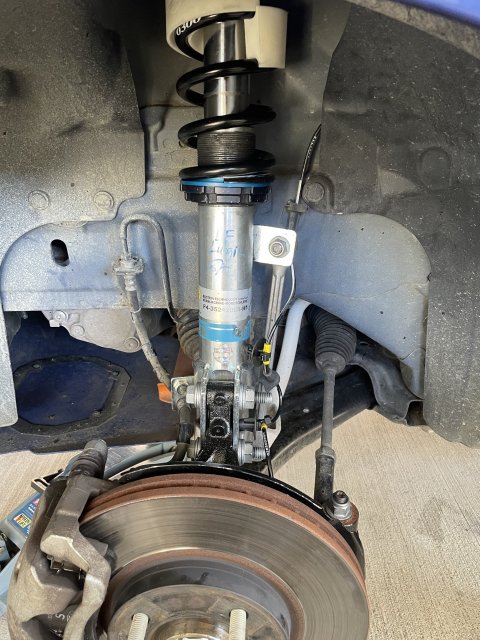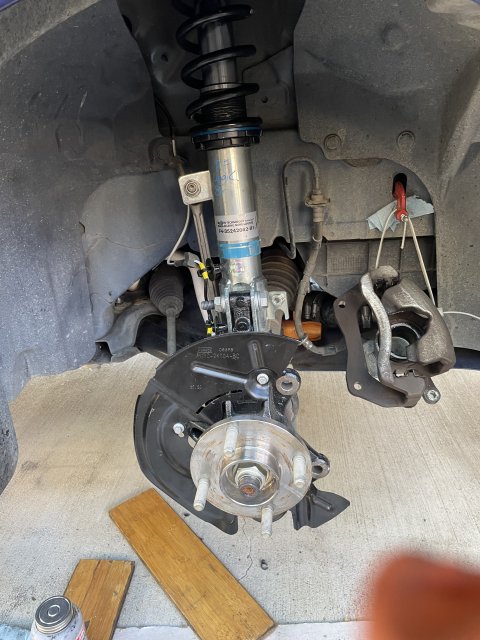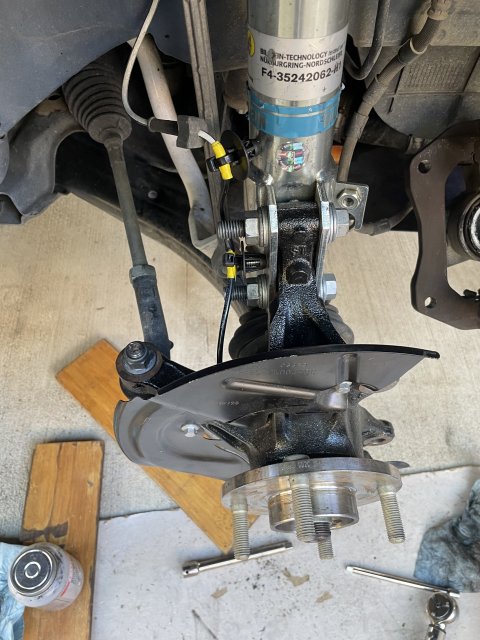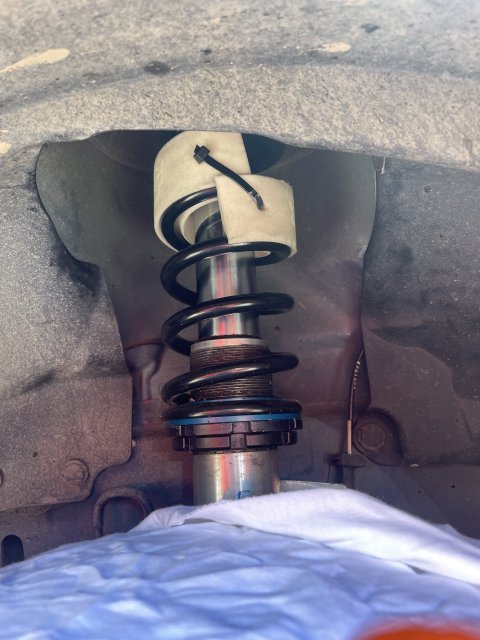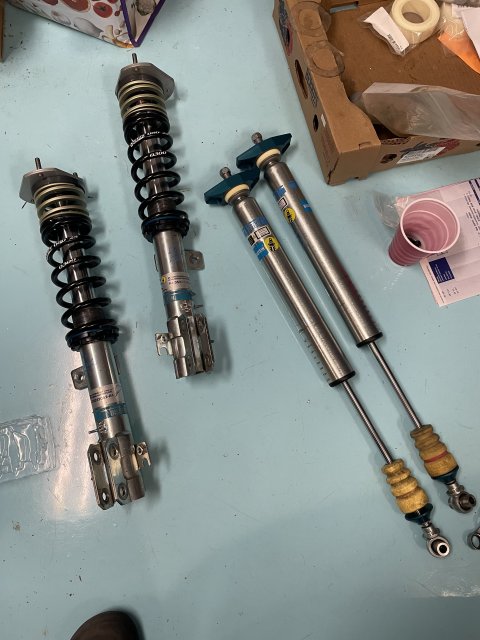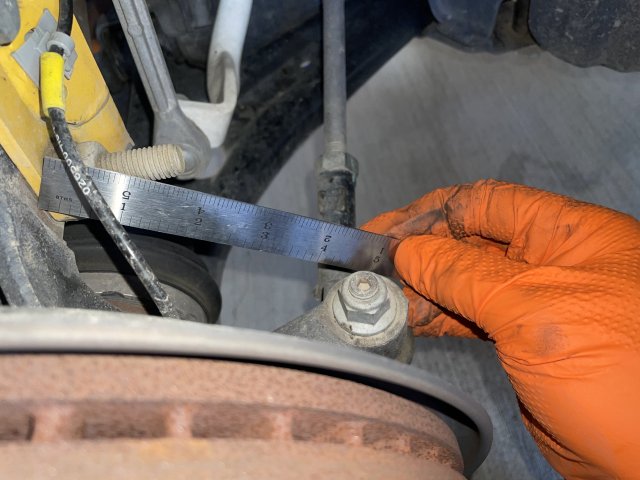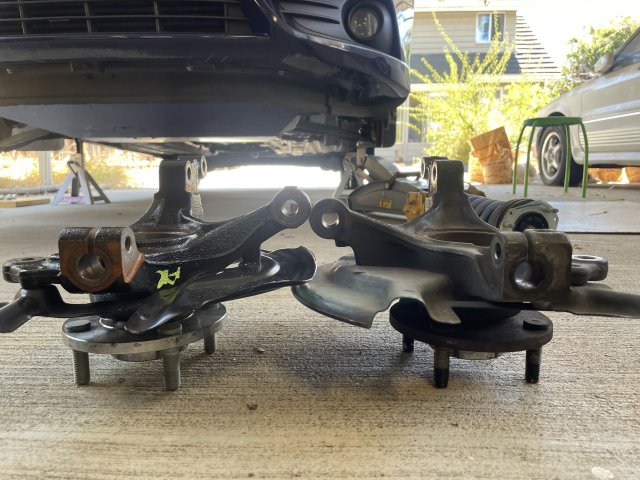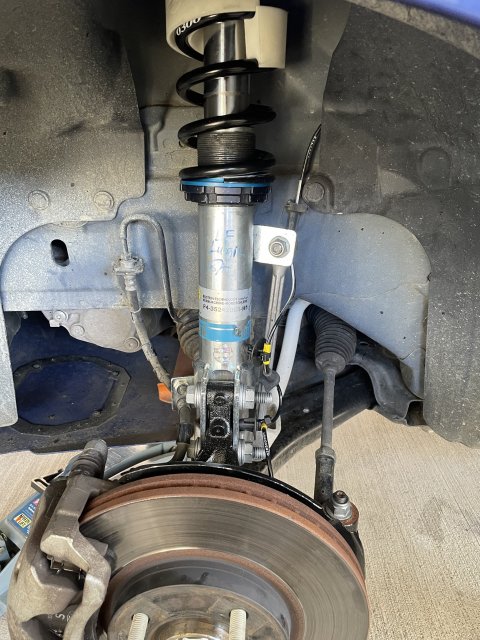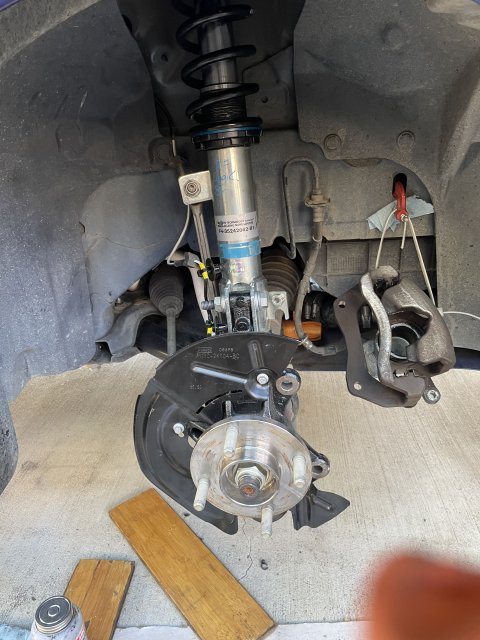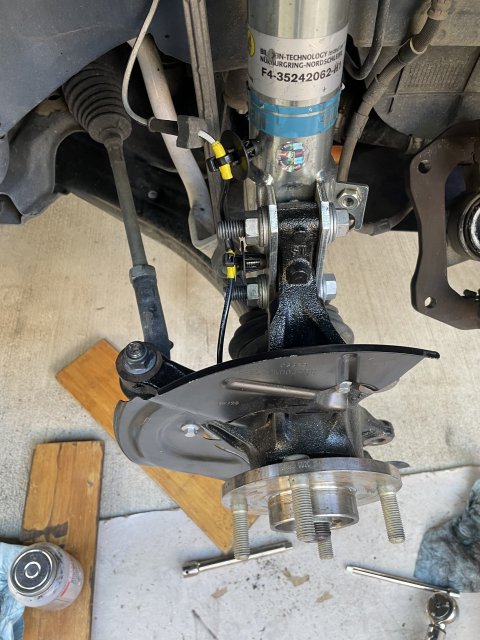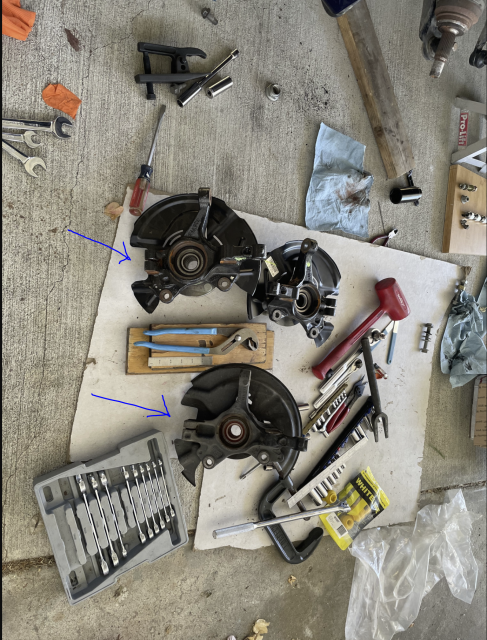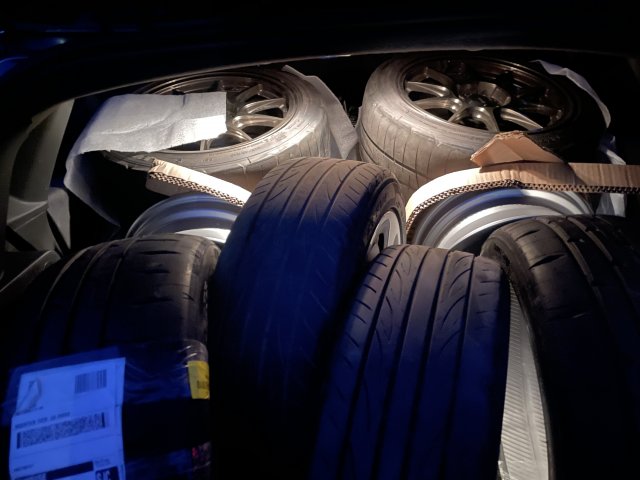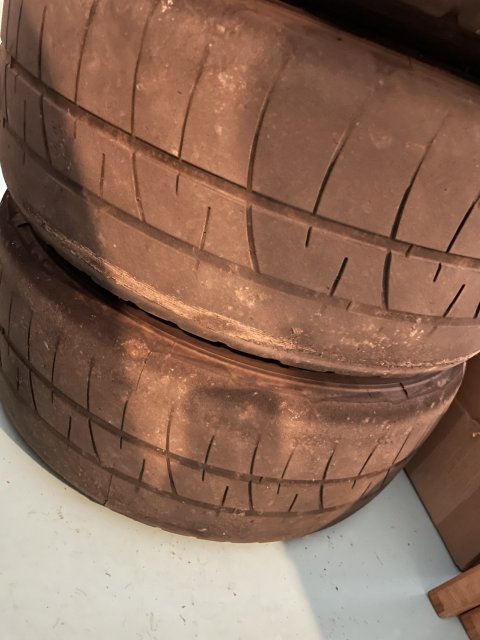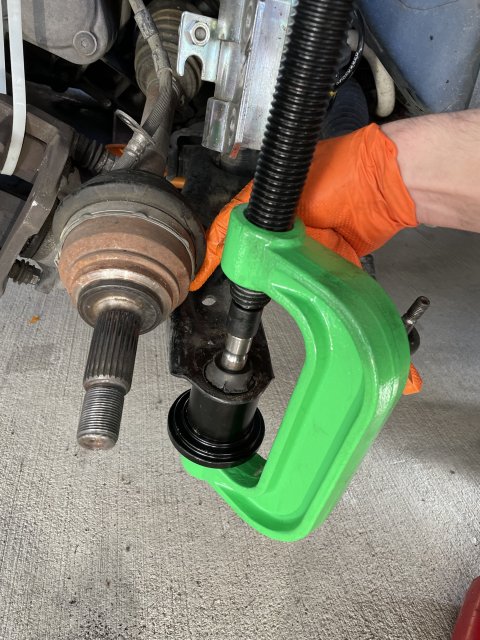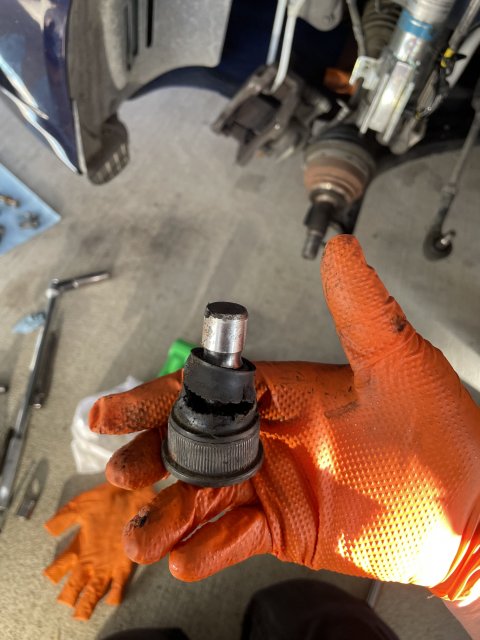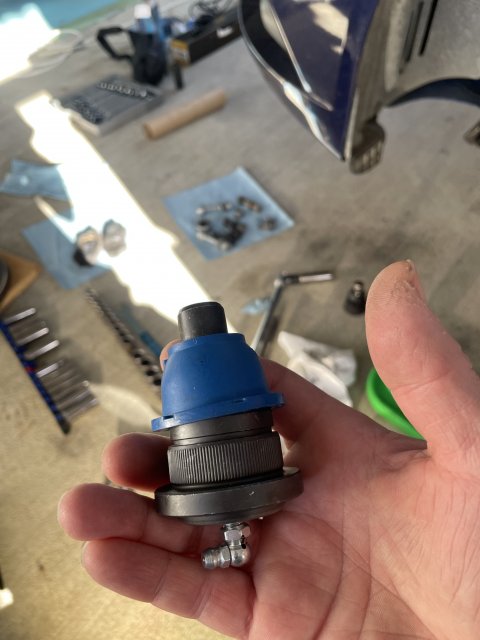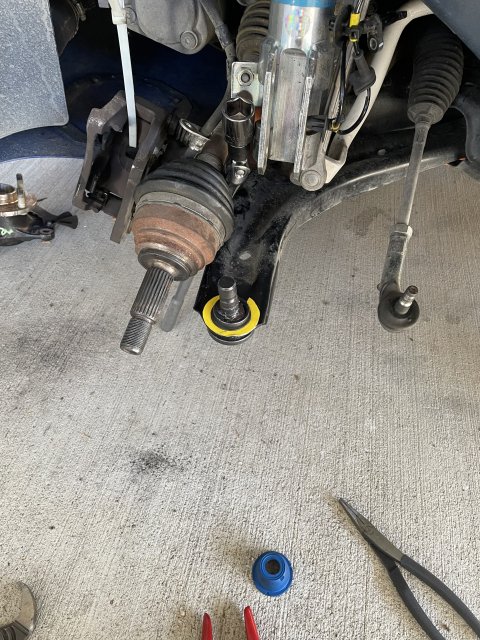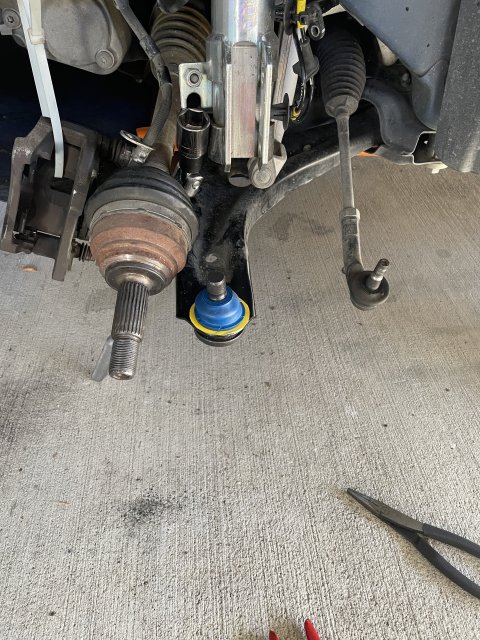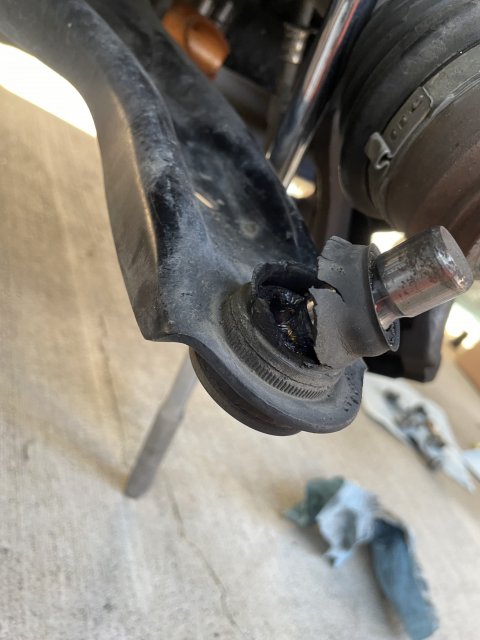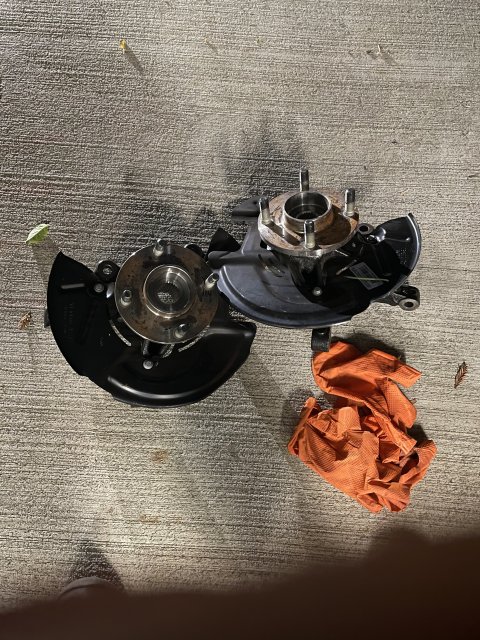Thread Starter
#121
Thread Starter
#121
The Front uses retuned B14 inverted struts, which are essentially a Bilstein motorsport strut. Used Swift 65mm ID springs - 300 lb/in main spring, 3k (168 lb/in) tender, again with a soft spring rubber on the driver's side (which I had to ziptie in as the soft spring rubber seems to want to slip out of the spring). The 65mm ID spring sort of fits on the 62mm Bilstein spring seat, but I decided that like, the rear, it should have an adapter to fit a little more snugly. Got ahold of some old style DNA camber plates (thanks to @kevinatfms) to have a direct fit upper spring seat. Unfortunately DNA has changed the design (possibly twice) since, to one that now requires either the stock plastic upper bearing/seat, or a separate spring seat, which would have meant a 7" spring instead and slightly less available compression travel.
Other than the tuning from FCM, the front was probably the more straightforward of the two shock sets. Shaikh hooked me up with a softer bumpstop, and was also able to remove some of the droop limiter bushings inside to give an additional 30mm of droop, which gives slightly more travel than the stock style strut. Almost every coilover strut available has droop travel reduced by about an inch vs the stock struts, and sometimes reduced compression travel to boot, which is not really a good thing for running the car near stock ride height.
Total shock travel is now around just shy of 4.5" in the front and 6.5" in the rear without pushing into either bumpstop, which while not the level of travel in a proper "rally" coilover, is intended to be plenty enough travel given the 300/224 spring rates such that both bumpstop contact and running out of droop travel will rarely be a problem even on rough backroads.
The setup is tuned to produce 1.9 Hz front and 2.1Hz rear natural frequencies, at the low end of what you'd normally consider a track setup. For a reference point, its stiffer than a Porsche 996 GT3 and a slightly softer than a 996 GT3 RS, neither of which anybody would call "soft"
Despite this, the dampers are producing shockingly good ride quality (far better than stock) in conjunction with the tamed high-speed damping courtesy of FCM's "KBO" (kerb-blowoff) modifications. The gas pressure is also reduced to a level optimized for the damping which helps as well. The best way to describe this setup is probably "tarmac rally", but without the brutal ride typically present in those setups.
There's also another surprise that I'll post on later - a fairly wild experiment I'm trying that you can see in the pictures below. See if you can figure out what it is.
Other than the tuning from FCM, the front was probably the more straightforward of the two shock sets. Shaikh hooked me up with a softer bumpstop, and was also able to remove some of the droop limiter bushings inside to give an additional 30mm of droop, which gives slightly more travel than the stock style strut. Almost every coilover strut available has droop travel reduced by about an inch vs the stock struts, and sometimes reduced compression travel to boot, which is not really a good thing for running the car near stock ride height.
Total shock travel is now around just shy of 4.5" in the front and 6.5" in the rear without pushing into either bumpstop, which while not the level of travel in a proper "rally" coilover, is intended to be plenty enough travel given the 300/224 spring rates such that both bumpstop contact and running out of droop travel will rarely be a problem even on rough backroads.
The setup is tuned to produce 1.9 Hz front and 2.1Hz rear natural frequencies, at the low end of what you'd normally consider a track setup. For a reference point, its stiffer than a Porsche 996 GT3 and a slightly softer than a 996 GT3 RS, neither of which anybody would call "soft"
Despite this, the dampers are producing shockingly good ride quality (far better than stock) in conjunction with the tamed high-speed damping courtesy of FCM's "KBO" (kerb-blowoff) modifications. The gas pressure is also reduced to a level optimized for the damping which helps as well. The best way to describe this setup is probably "tarmac rally", but without the brutal ride typically present in those setups.
There's also another surprise that I'll post on later - a fairly wild experiment I'm trying that you can see in the pictures below. See if you can figure out what it is.
Attachments
-
2.5 MB Views: 20
-
2.2 MB Views: 21
-
1.9 MB Views: 18
-
1.7 MB Views: 19
-
1.9 MB Views: 16
Last edited:

